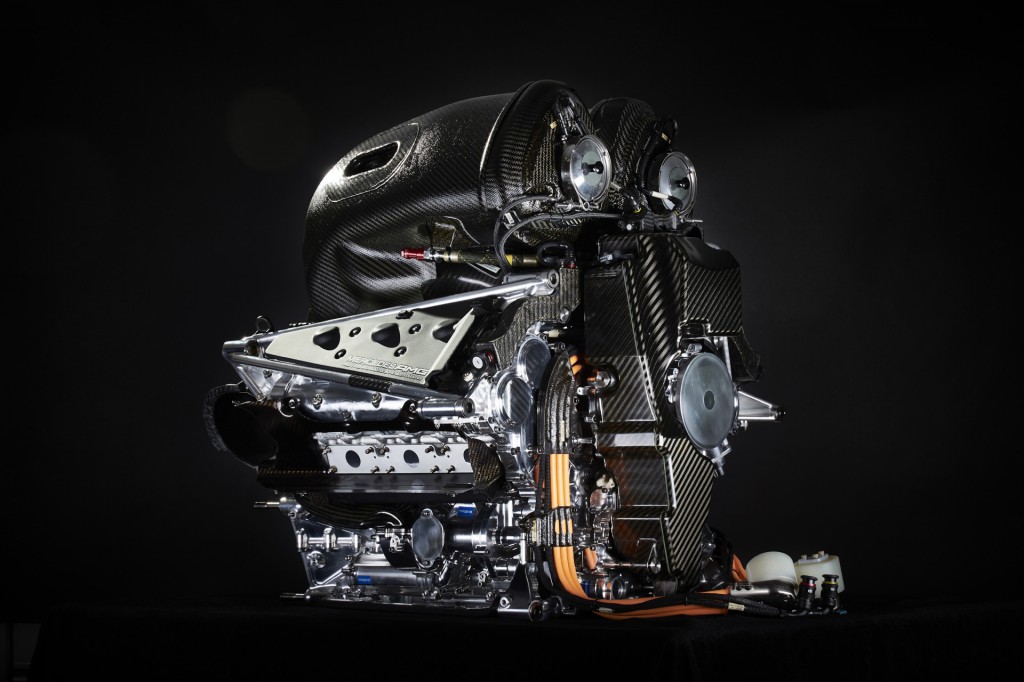The Mercedes AMG Formula 1 team's 2017 season has been a successful one thus far, and although the drivers deserve much of the credit, the team itself has done some remarkable things as well.
Notably, Mercedes' current F1 engine achieved 50 percent thermal efficiency for the first time.
In the video, Owen Jones, head of performance and controls at Mercedes AMG High Performance Powertrains, the unit responsible for Mercedes' F1 engines, discusses how significant 50 percent thermal efficiency is in racing.

Mercedes AMG W07 Hybrid 2016 Formula One car power unit
Thermal efficiency is the potential energy burned in gasoline. Engines, therefore, must extract as much useful work, or power, from fuel as possible. Mercedes' recent dyno tests showed the 1.6-liter turbocharged V-6 scored in excess of 50 percent thermal efficiency; more than half of the available energy in the fuel is now doing useful work, not simply being wasted as heat and noise. Many engines only achieve around 35 percent thermal efficiency.
Owen says Mercedes spent a lot of time on the fundamental thermal dynamic principles such as gas exchange processes and combustion. From there, the team needed to reduce waste and losses through low friction. Oils were developed to reduce waste and friction, and exhaust waste heat is converted into electric power—the complete F1 power unit is also paired with two motor-generators. One of these aids the engine in driving the rear wheels while the other is used to spool up the turbocharger.
The best part is that this same powertrain will end up in a road car! The Mercedes-AMG Project One will feature a version of the engine detailed here, so grab a closer look at its thermal dynamic properties right up above.